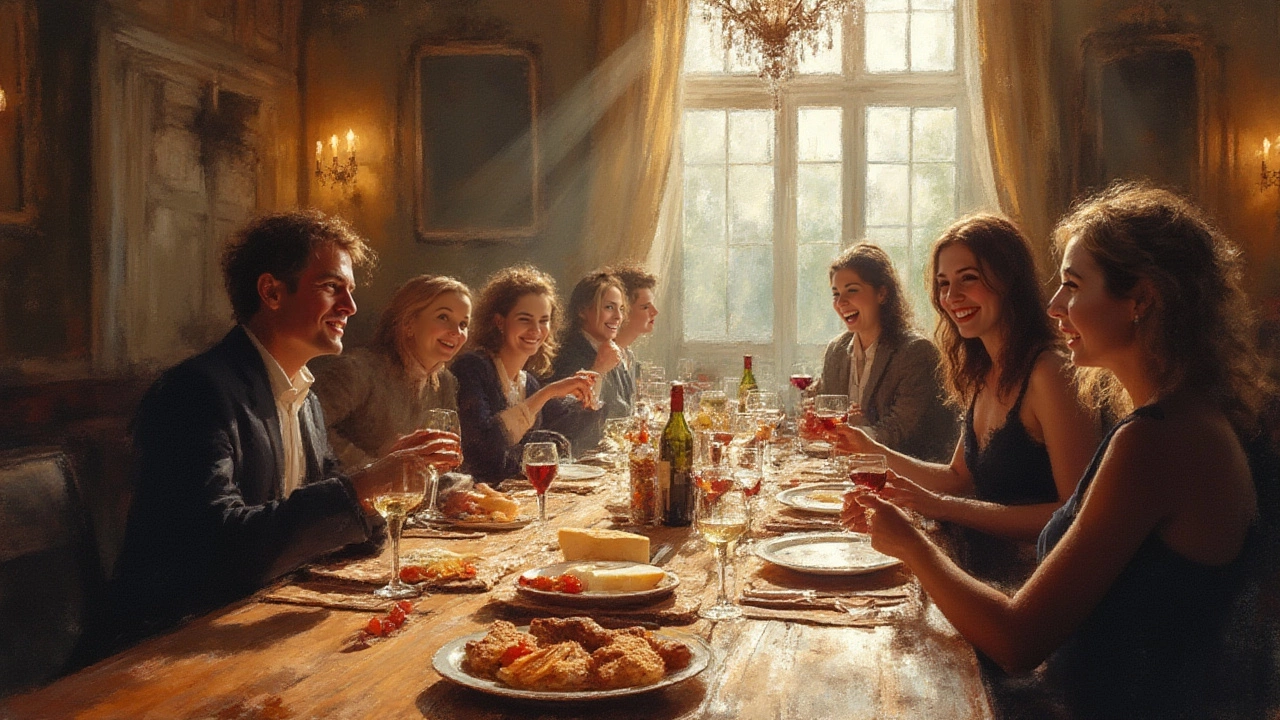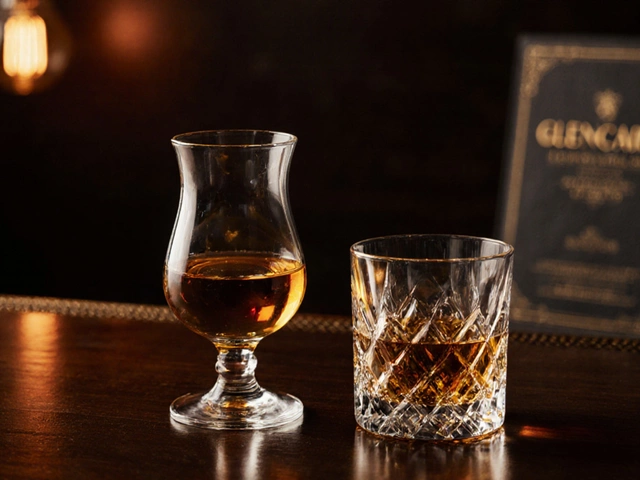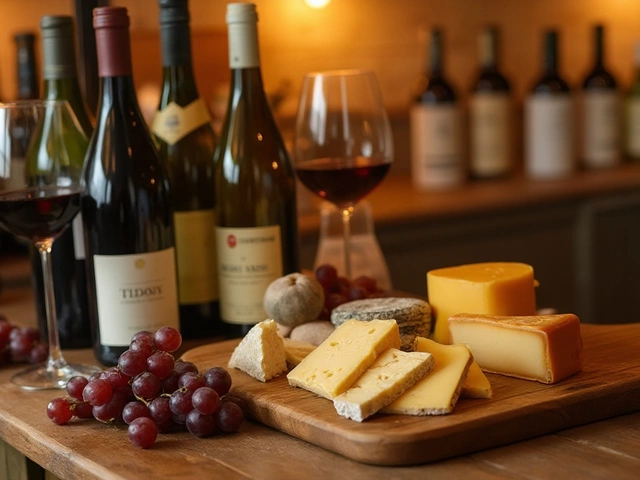No one tells you this before your first wine tasting, but biting into a sharp cheddar while swirling a Pinot Noir can change the whole game. Picture it: a quiet tasting room, eager faces, glasses lined up like soldiers. And just as the sommelier starts explaining tannins, someone crunches a breadstick. Does it ruin the moment or unlock a new layer of flavor? Eating during a wine tasting isn’t taboo. In fact, it’s part of the ritual in many places—if you know how to do it right. The trick is knowing what helps spotlight the wines, what gets in the way, and why the “rules” shift from one tasting room to another. Let’s get real about what works, what kills the vibe, and how pros handle everything from hunger pangs to palate fatigue without looking clueless.
The Right Way to Enjoy Food at a Wine Tasting
Wine tasting isn’t just about swirling, sniffing, and sipping. Good sommeliers know that food isn’t an afterthought—it’s a tool. But there are some clear dos and don’ts. At nearly every serious wine tasting, you’ll see something to nibble on. A basket of breadsticks, a small plate of cheeses, maybe unsalted crackers or plain nuts. The reason? Food helps cleanse your palate. Between pours, wine can coat your mouth with acidity, tannins, or sweetness, and a quick bite resets everything, letting you truly sense what’s unique in each glass. But don’t get carried away—anything too spicy, salty, or greasy is the kiss of death for good wine. Spicy salami? Save it for the afterparty. Even strong onion or garlic—one whiff, and everyone’s nose is ruined for the next pour.
Now, at a high-end tasting, etiquette matters. No crunchy chips, no perfumed hand cream, and no double-dipping into communal bowls. The goal is to keep your senses clear. Some wineries serve set food pairings—think brie with Chardonnay, grilled pork with Pinot Noir, or bittersweet chocolate with a brooding cabernet. That’s more like a guided tour, and here, eating is the whole point. With these, take a small bite first, let that flavor breathe for a second, then sip the wine. Notice what changes? That’s the magic—the textures, flavors, and even mouthfeel of the wine can change completely based on what you eat.
But don’t assume every wine event is a food fest. Walk into certain Old World cellars, in France or Italy for example, and you’ll find nothing but bread and maybe a glass of water. The French have a reason: they want nothing to cloud your first impression of the wine. In California, on the other hand, some tasting rooms have full cheese boards, even truffle popcorn. There is no single rulebook. Different hosts, different philosophies.
If you’re tasting at home, feel free to get experimental. Grab an apple slice with a Riesling, or a hunk of aged gouda with a spicy Zinfandel. But stick to plain foods if you’re judging wines (like in competitions). Here, most pros will eat bits of baguette or even take small sips of water—but nothing that lingers or changes the wines’ taste profile. Heck, some competitions even keep a table of apples and cheese to help tasters “reset” after a particularly strong wine.
If you’re worried about getting hungry, check ahead. Most wineries or events will let you know if food’s provided. And if you’re unsure what’s appropriate, a safe bet is to eat a light meal before. That way, you’re not starving and tempted to sneak a double handful of almonds mid-flight. And remember: don’t be the guy who crashes the vibe with a giant bag of spicy chips. Leave room for the main event—the wine.
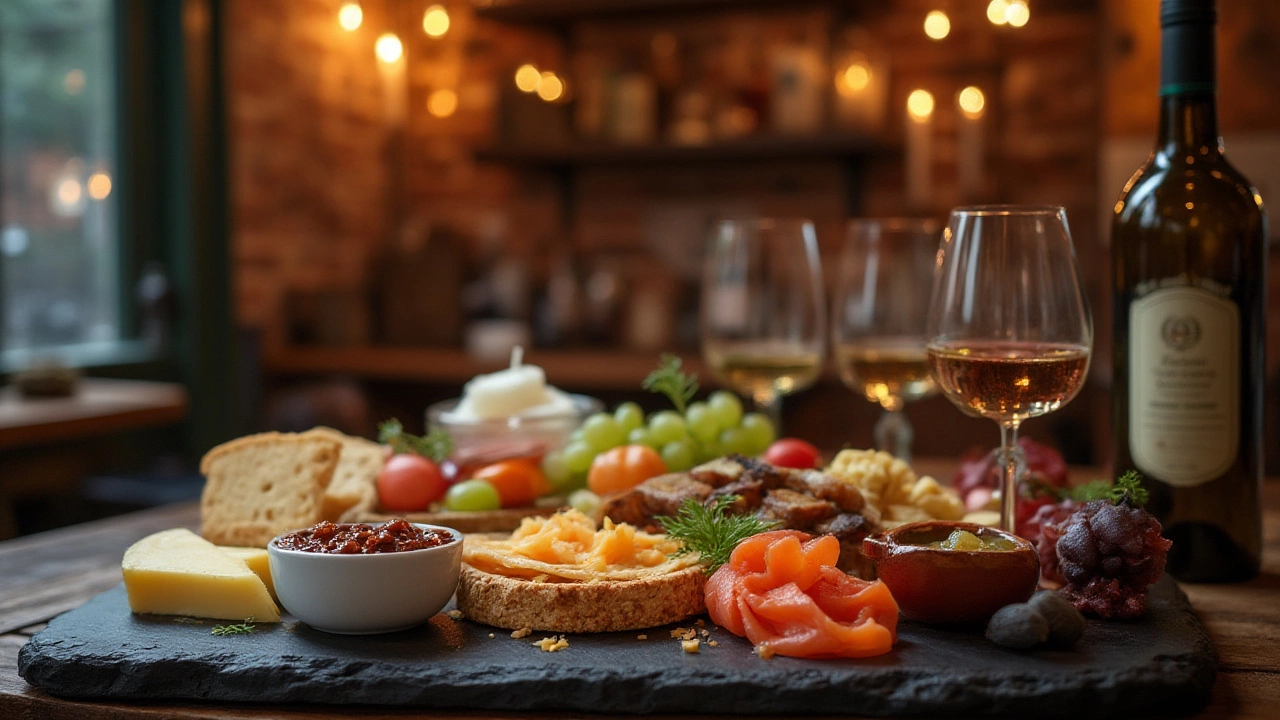
Best Food Pairings and Why They Matter at Tastings
If you think wine is just about the drink, you’re missing half the fun. The right snack at the right time can make a so-so wine come alive—or, on the flip side, ruin an otherwise perfect Champagne with the wrong cheese. It’s science, not just snobbery. Ever notice how biting into salted almonds makes a dry sherry taste twice as rich—or how a sip of red with fatty charcuterie suddenly feels lighter? That’s how your senses work. Wine has acidity, tannin, alcohol, sweetness, and bitterness, and food pokes at all those dials.
Check out this quick rundown of classic pairings and why they work so well:
| Wine | Classic Food Pairing | Why It Works |
|---|---|---|
| Sauvignon Blanc | Goat cheese, asparagus | The tartness and bright notes mirror each other |
| Chardonnay (oaked) | Roast chicken, brie | Creaminess pairs with the wine's round body |
| Pinot Noir | Salmon, roast duck | Delicate reds fit lighter meats and earthy flavors |
| Cabernet Sauvignon | Grilled steak, aged cheddar | Tannins cut through fat; cheese softens intensity |
| Moscato | Spicy Thai, fresh berries | Sweetness tames heat, echoes fruit notes |
The real trick is balance. Acidic wines clean up fats, tannic reds need something fatty to soften them, and super-sweet wines will make anything salty taste spectacular. These aren’t just old tricks—they’re tried and tested by everyone from Michelin chefs to wine judges at the Decanter World Wine Awards. And here’s something wild: a study from UC Davis (one of the top wine programs in the world) found that even a sip of water, if it’s mineral-heavy, can tweak your palate just enough to throw off the next wine. So imagine what a blue cheese will do.
At organized tastings, hosts often use this knowledge to steer people’s attention: try a simple cracker before one pour, and then a slice of Manchego before the next. Sometimes, you’ll even get paired flights designed to show how flavors transform. If you’re hosting, mix it up but avoid anything too powerful, like garlic bread or crazy-hot sriracha snacks. You want the wine to run the show, not the food.
- Keep portions small—each bite should be enough to clear your palate, not fill your stomach
- Look for contrasts and complements: fatty cheese with tannic reds, salty snacks with sweet wine
- Always leave room to try the wine on its own, then with food, to spot the change
- Trust your senses, not just the experts—sometimes odd combos just work for you
And remember, local matters. In Tuscany, expect Pecorino with Chianti; in German tastings, rye bread with Riesling. There’s a reason why regional pairings taste perfect—they’ve had centuries to get it right. Don’t fight tradition. But don’t be afraid to go off-script a little, especially if you’re tasting at home. The point is to have fun and explore.
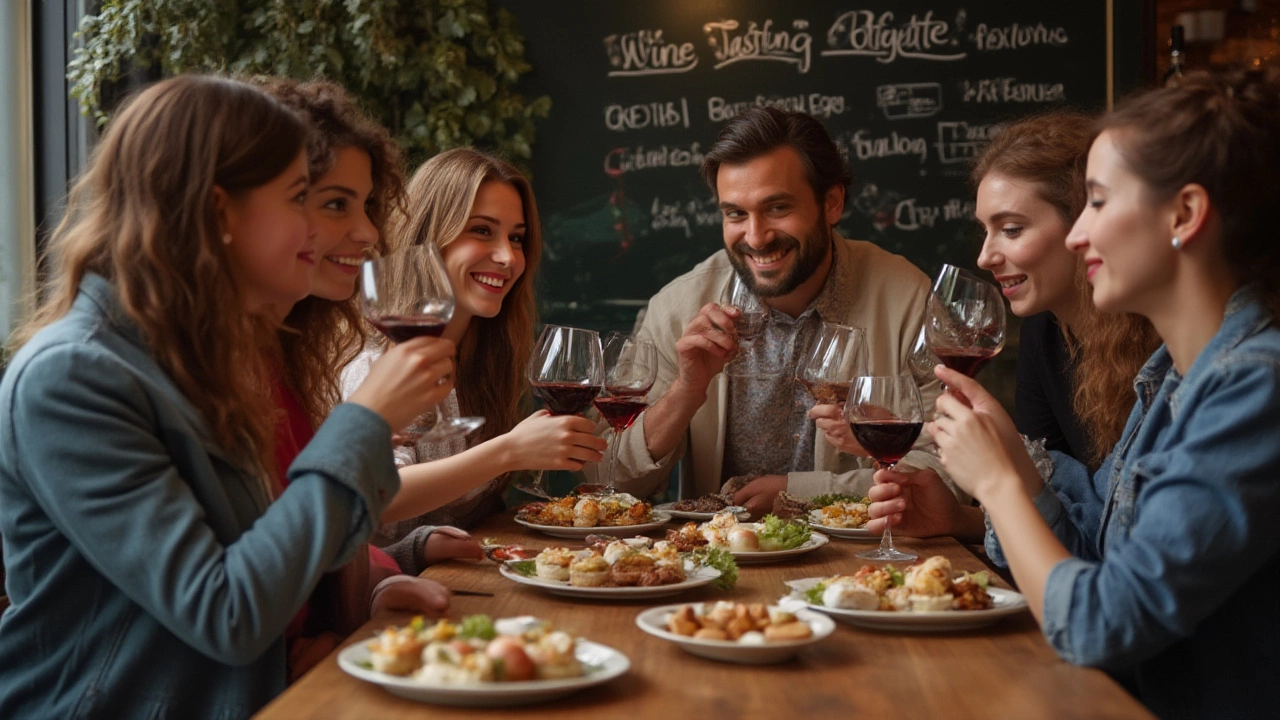
Wine-Tasting Etiquette: What to Avoid and What Really Impresses
Here’s where things get awkward if you don’t know how it all works. You walk in, see a table loaded with cheese, dips, fruit, and you’re starving. Dive in too early or pile your plate too high? You’ll get stares from the old hands. The first rule of wine tasting is: respect the process. Most tastings—whether at a vineyard, a wine bar, or a fancy fundraising event—follow a rhythm. Wine comes first, food comes second, palate cleansers come between. No one expects you to be a monk, but showing a little restraint marks you as someone who gets it.
Don’t overwhelm your palate at the start. It’s tempting to grab a strong blue cheese and go to town, but those flavors stick with you and crowd out what’s subtle in the wines to come. Start mild. If there are crackers or bread, use those to clear the deck. Skip the strong colognes or lotions—they wipe out the delicate aromas. No one wants to smell Chanel No. 5 when they’re searching for blackcurrant in a Bordeaux. And keep your tasting notes (mental or written) separate from your snack plate. You’re not here for the buffet—it’s about the wine.
If you want to impress, try this: take a sip, then a small bite, then another sip. See how the flavors switch gears. Mention a flavor you notice—nothing pretentious, just something real. Maybe, "That cheese actually makes the Riesling taste almost tropical." Hosts love it, and it leads to way better conversations than just saying, "Mm, nice wine." Asking thoughtful questions (“Does this wine bring out any flavors in the cheese I should notice?”) shows you’re present, curious, and engaged. And if someone offers a suggested pairing, try it. They’ve probably spent a lot of time dialing it in.
One last thing—pace yourself. It’s not uncommon for new tasters to get a little too enthusiastic, refilling on snacks while the pours add up. Small bites, steady sips, and lots of talking in between. And don’t be afraid to spit (use the spittoons provided). The pros do it to keep their heads clear, especially when tasting a lot of wines. Spitting isn’t rude. In fact, staying sharp is what lets you actually appreciate the differences between each wine—and each food pairing too.
So can you eat during a wine tasting? The short answer: yes—if you know what you’re doing. Food isn’t just allowed; it’s a hidden tool for enjoying wine at a whole new level. Just follow a few small rules, respect the vibe, and let each bite open up something new in every glass. Hungry yet?
